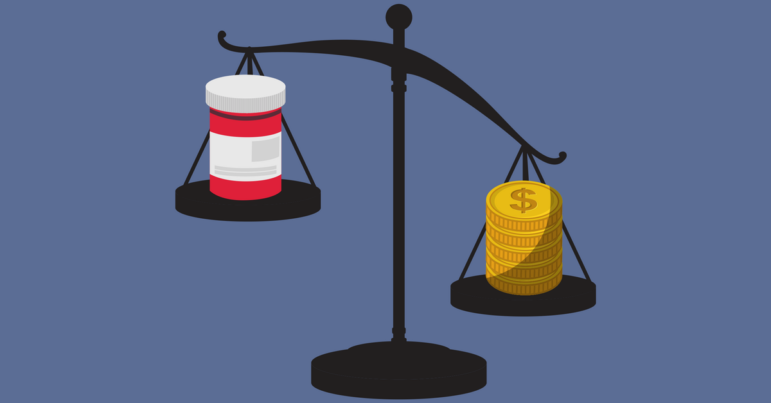The US famously pays far more for medications than other countries, putting stress on the health care system and individual patients who often bear this cost. The pharmaceutical industry often justifies these high prices by claiming that they create the opportunity for more innovation in the drug space, and that lowering prices would diminish the ability of drugmakers to create new and better drugs.
Given this argument that higher prices leads to better drugs, one would expect that the price of a drug should be correlated with its clinical benefit. It’s common sense–if we are paying more for a certain drug, it should be because it works better.
Unfortunately that does not appear to be the case, according to two recent studies on drug prices. In The Lancet Oncology, researchers at the University of Zurich analyzed the prices and clinical benefit of 65 cancer drugs approved by both the US Food and Drug Administration and the European Medicines Agency over the past ten years.
The median monthly treatment costs for these new drugs in the US was $13,200, more than twice as high as in England, Switzerland, Germany, and France. However, they also found that cost of the drugs were not correlated with clinical benefit, according to value frameworks from the American Society of Clinical Oncology and the European Society of Medical Oncology.
“We have so many drugs on the market and we found that some don’t have the value you’d expect,” said study author Kerstin Vokinger, in STAT News. “The prices of cancer drugs should be better aligned with their clinical importance in order to improve access.”
It’s not only cancer drugs that are being priced regardless of effectiveness. In a recent piece in Health Affairs blog, Harvard Medical School professors Richard G. Frank, Jerry Avorn, and Aaron S. Kesselheim asked the question, “Are the drugs we approve in the US considered effective according to other countries’ assessments?” They looked at 46 new drugs approved by the FDA in 2017 and compared evaluations of the drugs’ effectiveness using assessments from independent boards in Canada, Germany, and France.
Of the 27 drugs that were evaluated in these other countries, 17 of these drugs were found to offer little or no added clinical benefit by all of the boards that evaluated them. For 6 drugs, there was not consistent agreement between the different boards about the effectiveness of the drugs. Only 4 drugs were determined to have at least minor added benefit by all of the boards that evaluated them. These drugs were Fasenra for asthma, Dupixent for excema, Imfinzi for urothelial carcinoma, and Rydapt for leukemia.
The authors noted that many of the drugs found to be not effective when evaluated by international boards are very expensive. Eli Lilly’s breast cancer drug Verzenio was found to have no added benefit in both Germany’s and France’s reviews; the list price of the drug is more than $12,000 a month. Gilead’s Vosevi, a combination drug to treat Hepatitis C, was found to have only minor clinical benefit by one of the international boards–the drug costs $26,000 for 28 pills.
Figuring out whether a drug is priced “fairly” is tricky, but at the least we should agree that paying thousands more for drugs than other countries without a corresponding clinical benefit is a bad deal.
